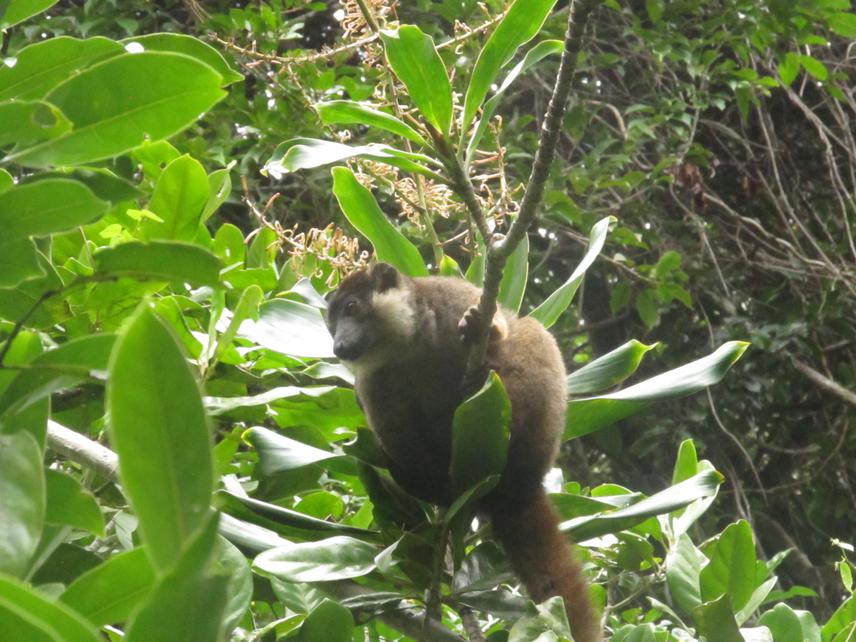Felaniaina Rafenoarisoa
The white collared lemur, Eulemur cinereiceps is one of the most threatened Eulemur with an urgent conservation concern. The species is found in four ranges: at low densities in a thin strip of moist tropical lowland forest in south-eastern Madagascar. A little isolated population is recently found at the newly protected area of Ankarabolava-Agnakatrika. Threatened by its very restricted areas, E. cinereiceps is potentially sensitive to habitat degradation due to its habitat preferences and dependence on fruit, which is highly notable at Ankarabolava-Agnakatrika.

E. cinereiceps, male, foraging.
Indeed, our last findings (in 2015), a quick inventory during our last research in the same field site with the same species (using daytime feeding measurement), revealed that E. cinereiceps feeds on 56 plant species. Diet is composed by 80% of fruit. Such intrinsic vulnerability is accentuated by anthropic activities. The local population’s life at Ankarabolava-Angakatrika depends on the forest which has been continuously affected by selective logging for firewood and case-making (houses made entirely with wood). Human activities are supposed to impact lemur behaviour, mainly feeding behaviour. We will highlight the strategy that E. cinereiceps might adopt to circumvent intrinsic and extrinsic factor issues on feeding. The study aims mainly to identify important E. cinereicepses’ feeding trees, to determine E. cinereiceps’s intragroup daily and seasonally feeding strategy and to determine food quantity and quality daily variation on lemur’s food composition.
We will combine field data on feeding ecology to categorize food intake preferences and phytochemical analyses to assess the nutrient content of consumed food, in order to characterize daily and seasonal food intake both qualitatively and quantitatively. Feeding tree resources are expected to be annually, seasonally and daily categorized by its importance for E. cinereiceps, based on some criteria: ingested quantity, number of consumed parts of the plant (leaves, flower and/or fruit), feeding recurrences on the plant and nutrients quantity and quality. Findings will help guide the selection of tree species for restorative planting while also shedding light on the basic nutritional requirements of this imperiled species.
Header: Local guide installing Wireless Rain Gauge Weather Station.